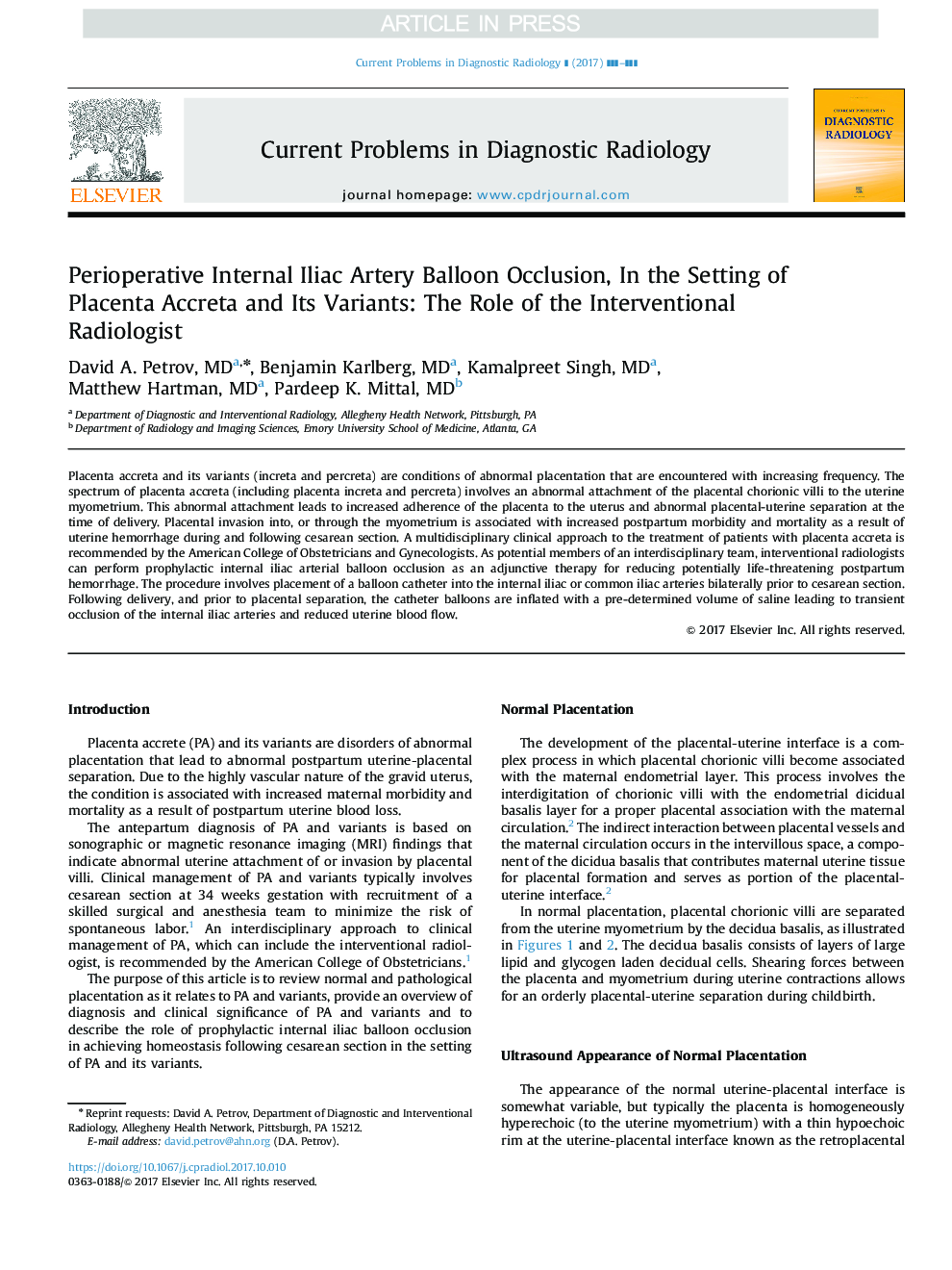| Article ID | Journal | Published Year | Pages | File Type |
|---|---|---|---|---|
| 10222521 | Current Problems in Diagnostic Radiology | 2018 | 7 Pages |
Abstract
Placenta accreta and its variants (increta and percreta) are conditions of abnormal placentation that are encountered with increasing frequency. The spectrum of placenta accreta (including placenta increta and percreta) involves an abnormal attachment of the placental chorionic villi to the uterine myometrium. This abnormal attachment leads to increased adherence of the placenta to the uterus and abnormal placental-uterine separation at the time of delivery. Placental invasion into, or through the myometrium is associated with increased postpartum morbidity and mortality as a result of uterine hemorrhage during and following cesarean section. A multidisciplinary clinical approach to the treatment of patients with placenta accreta is recommended by the American College of Obstetricians and Gynecologists. As potential members of an interdisciplinary team, interventional radiologists can perform prophylactic internal iliac arterial balloon occlusion as an adjunctive therapy for reducing potentially life-threatening postpartum hemorrhage. The procedure involves placement of a balloon catheter into the internal iliac or common iliac arteries bilaterally prior to cesarean section. Following delivery, and prior to placental separation, the catheter balloons are inflated with a pre-determined volume of saline leading to transient occlusion of the internal iliac arteries and reduced uterine blood flow.
Related Topics
Health Sciences
Medicine and Dentistry
Radiology and Imaging
Authors
David A. MD, Benjamin MD, Kamalpreet MD, Matthew MD, Pardeep K. MD,
